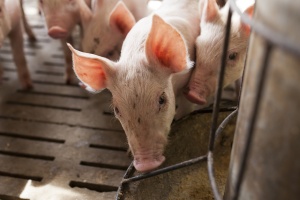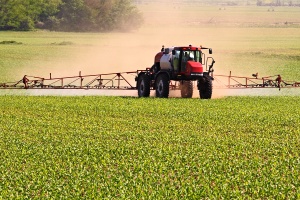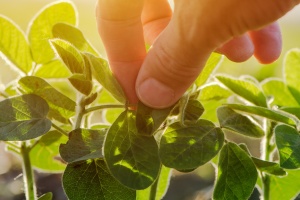6 Ways to Reduce Our Environmental Footprint
With Earth Day this month and a new decade ahead of us, it’s a good time to reflect on what we can do to lessen our environmental footprint. It’s a pretty common thought for today’s farmers. The end goal is always sustainability: implementing the best practices now so future generations can build a life and livelihood on the farm if they choose.
So, we’re highlighting six Illinois farmers who are doing cool things to lessen their farm’s environmental footprint, and ways you can do the same.
Prolong your produce | Ruth Zeldenrust
When it comes to today’s produce, cosmetic perfection is the standard. No bumps, bruise-free, perfect shapes, the list continues. On our farm, we try to make the most of every piece of produce that’s grown, starting with a daily field walk. Each day I pick one or two of the best-looking fruits and vegetables and lay them on my porch railing. That way, anyone helping for the day knows what’s ready. This close attention to detail lets us maximize peak freshness and reduce farm waste. I also line up local food pantries to pick up produce that isn’t sold at the farmers market. From your standpoint, you can do the same. Operate on a first in, first out refrigerator rule. Know you won’t be able to get it all eaten? Freeze it! And if you have a big garden, share what you can’t eat with food pantries. They’re always looking for more fresh produce.
Rethink recycling | The Bohnert Family
Between our 500 Jersey cows and 1,300 acres of cropland, we’ve found many ways to recycle on our farm. We use our cows’ manure as a natural fertilizer on our fields. Our cows’ bedding is made up of chopped straw and recycled newspaper. And, our well water that is used in a cooling system to quickly chill milk to about 38 degrees can be reused as safe drinking water for cows. Recycling can take many forms for you, too – from repurposing glass jars to opting for reusable bags.
Make room for milkweed | Joanie Stiers

On our farm, it’s not uncommon to find milkweed – an essential plant for monarch butterflies – in cattle pastures, along fence lines and atop our grassy hills. In an effort to keep monarchs off the endangered species list, we’re working to protect and restore these important habitats. You can support butterflies and pollinators by planting native Illinois plants in your yard.
Use smart tech | Drew Kuhn
As we build new pig barns, we’re always considering what technology components can make us more efficient and sustainable. One of our newer barns is the mecca of pig barn technology: we can monitor barn temperature, water and feed consumption – and also electricity use – allowing us to track and improve our environmental footprint. Smart technology in your home can make a difference to your environmental footprint, too, with everything from a smart thermostat to swapping your old shower head for a water-saving one.
Cover your ground | Matt Boucher
Our farm’s soil is a complex system of microorganisms we want to keep alive and healthy. Cover crops like rye, radishes and clover that we plant in the fall and leave in the ground until the following spring help us protect soil from wind and water erosion. They also add valuable nutrients back into the soil – “plant food” for crops that will grow there next year – and allow us to use less fertilizer and pesticides, and make fewer passes with field equipment, reducing our carbon footprint. Think of cover crops like how your own lawn and landscapes work: grass and other deep-rooted plants keep the soil in place instead of washing away with rain and provide a barrier to erosion.
Watch your water use | Tim Scates

Crops are thirsty. They use water to take in nutrients and facilitate processes to grow, flower and yield. They’re picky, too, demanding different levels of water at different stages. Too little dries up yields. Too much causes drowning and runoff. With rainfall being so unpredictable in my part of the state, irrigation quenches crop thirst while helping us conserve this natural resource. How? A solar-powered weather station tracks rain fall and temperature, helping us determine when and how much water to release through our irrigation system so our crops stay healthy and we responsibly manage our water. You can wisely watch your water use at home, too. Install a rain barrel under a downspout and use the collected rainwater to water your garden. Or, consider investing in a smart sprinkler system to reduce your lawn’s water consumption.













0 Comments